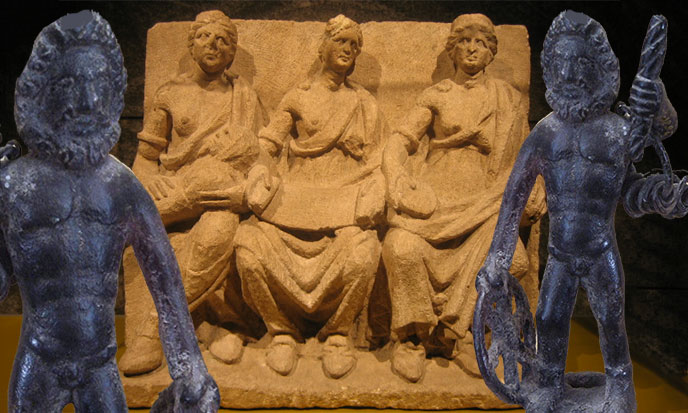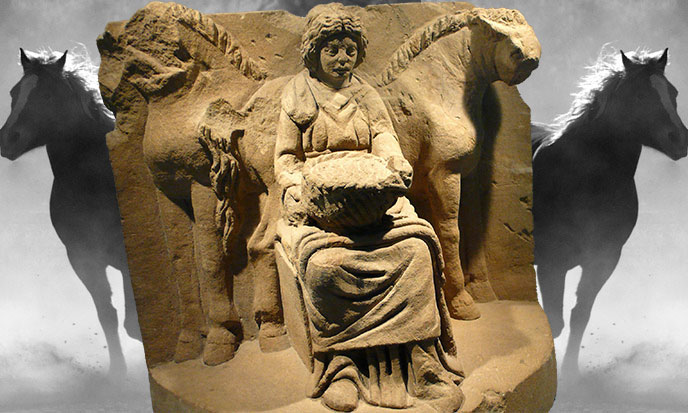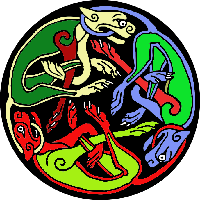
Like other planetary pantheon, Gallic gods are historical figures. Or rather legendary figures, as the official story is reluctant to study what is before 1500 BCE. Before this date, historians say without laughing, our ancestors were too zero to have any history.
The Gallic gods resume legendary figures, very recognizable, of the former gods – these astronauts genetically gifted, who have taught our ancestors every little thing. Why not asking Wikipedia for the mainstream version?
“From the primitive religion of Gaul, two gods have kept the favor of the people. First a chthonic mother goddess, mistress of life and death, associated with agriculture, protector of cattle and horses, and healer sometimes identified with the moon, sources, fire. Like all cults at a Great Mother, hers faded when the matriarchal society became patriarchal.” I have to say this is precisely the reign of Rama that marked this radical turn.
“Reduced to the rank of a consort Goddess, the Mother has yet continued to be worshiped under various names that hide the evil belief in a single goddess. She is thus raised, according to places and circumstances, under different names.
Under the name of Epona or Rigantona (Rhiannon), she was psychopompe and riders patron – the horse being, for the Celts, an animal related to the funeral world.
Under the name of Ann and Dana, she was the ancestor of gods and men, queen of the underworld, marshes, night and death.
Under that of Brigida, she was patron of medicine, the world of women and midwives;
Under the name of Belisama (the “Very Bright”) or Rosmerta, she was a prototype of Christian virgin Mary.
She was known under another name still, “the Virgin who bear” by the druids of the National College of the Carnutes forest.” (source)Wikipedia
![Premier plan : Statue de la déesse Hathor, 3e siècle AEC -- By Siren-Com (Own work) [CC BY-SA 3.0 (http://creativecommons.org/licenses/by-sa/3.0) or GFDL (http://www.gnu.org/copyleft/fdl.html)], via Wikimedia Commons --- Arrière-plan : Woody - Oasis In A Desert, Night And Day auteur: WoodyofmC -- CC BY-SA -- https://www.youtube.com/watch?v=nErJfX-MBSc ---- both modified by / les deux modifiés par Stef Kervor, Eden Saga hathor-dtr-oasis-688po](https://eden-saga.com/wp-content/uploads/hathor-dtr-oasis-688po.jpg)
This chthonic goddess, mother of all other gods, is Hathor the Sacred Cow, which becomes the horse protector for the Celts. Cow, horse, it sounds like the beginning of agriculture. Later on, her name become Dana Ann – Sainte Anne which has so little room in the Gospels and yet is so popular in Britanny.
And then, with successive shifts, she has replaced the false virgin Mary, another invention in the cryptic name of Our Lady.
“Still very popular in the early days of Christianity, the goddess was converted the sanctuary. “Virgo paritura” is the Cathedral of Our Lady of Chartres, as the belief of the Carnutes in the Virgin Mother was likely to announce the mystery of the Incarnation. Ann’s sanctuaries have become those of St. Anne, grandmother too, but the true God, and that the Britons still call “Mamm Goz” grandmother.
As for Brigida, she yielded to his namesake, St. Bridget, Abbess of Kildare in Ireland; some old Breton legends also see it as the crippled daughter of the innkeeper of Bethlehem, which alone of the village, offered assistance to Notre Dame and, thanking, saw to give two arms, she was born-armed.” (source)Wikipedia

“The primitive goddess had a companion, Cernunnos, a God with a deer antler, associated with the spring, to the wilderness, to free animals, tree growth. Cernunos magician was a God, the giver of wisdom. Caesar Lucan and summarizes the Gallic pantheon to male triad Toutatis, Esus and Taranis.” (source)Julius Caesar, The Gallic War
Never count on Caesar to draw a fair portrait of Gaul and the Gauls. Anyway his Gallic Wars is one of the few written sources that remain about Gaul.
The triad of which he speaks is not a Trinity in the Christian sense. It is more of a triad in the Roman way, as the Capitoline Triad.
However, it existed for the Gauls. The Christian Trinity or rather its original model, the Egyptian trinity – Isis Osiris Horus – has in Gaul equivalent with Taranis/Lugh, Belisama and Belenos.

Note that Lugh, Taranis and Cernunnos designate the same divine person whose historical existence is acquired in my eyes. These gods are the reptilians that astronauts call the Anounna Sumer and the Celtic tradition the Hyperboreans.
God the Father, for the Gauls is Taranis / Cernunos / Lugh. This is the same character, the father of Belenos / Ramos. “Lugh (the Shining) was celebrated on August 1st. His name is found in the etymology of many names of cities (Lyon / Lugdunum, Laon, Loudun …) Lugh was the master of intellect, arts, civilian and military techniques.” (source)Wikipedia
“God-father, Taranis has a son,”the Grand Son.” Called Belenos or Grannos, meaning “Bright” or “Burning”, the sun god was celebrated on May 1st by bonfires. Belenos had temples on high places. His sanctuaries have become those of San Miguel.” (source)Wikipedia We have recognized the great Ram or Ramos, whose name comes from ram = aries, plus Gallic suffix os, compared with Belenos, bel = bélier ie ram, plus the same Gallic suffix.

Ram was the son of Lugh and therefore the brother of Setanta / Cuchulainn / Kukulkan. If conqueror Rama had temples on high places, the reason is the gods were in heaven in their mother ship Hyperborea, but it’s mostly because if you wanted to go and see the gods, you had to climb over a flattened top mountain, serving as a spaceport.
“Esus is a lumberjack god, at least on the images that represent it. This iconography mean that he was both a destructive and liberating.” (source)Wikipedia
Esus remained popular among the simple Gauls as he was known healer and helpful.
This could explain why the papal legates in Avignon chose this name for the fictionnal character of Jesus. Healer and deliverer, such is indeed the concept of Jesus’ character invented in the Middle Ages, without any proven historical existence.
Esus changed in Jesus, beautiful sleight of passes. In one generation the people have confused them. This is also why the date of December 25, great religious festival of the Celts, was retained by the new religion as the date of Jesus’ birth.
And it’s still why menhirs and other megaliths, honored by the Old Religion, were shot, buried or Christianized, which is even funnier. A small cross engraved or carved on the stone was enough to transform a demonic object in a sacred place sprinkled with holy water.

The priests have also resumed the cross. To replace our ancient Hyperborea cross, showing the plan of the bubble ship, whose four rivers of Eden were the four branches. Our cross was life, the future, the beauty of the gods and the sensuality of goddesses. Our cross was the sweet memory of Eden, where the gods walked among men. They made a sign of death, a punishment object, an eternal shame. The priests took our ancestors for morons and they were right: the strategy worked over centuries, and is still working.
“As for Toutatis, most famous among the Celts under the name Ogmios, bald old man with a pierced tongue, he was the god of eloquence, persuasion, justice and war.” (source)Wikipedia
Ogmios is one of the first Druids, the legendary wisdom. He founded the most famous druid university, the oldest in the forest Carnutes, on a hill where now stands the most famous and most powerful medieval cathedrals, Notre Dame de Chartres.


